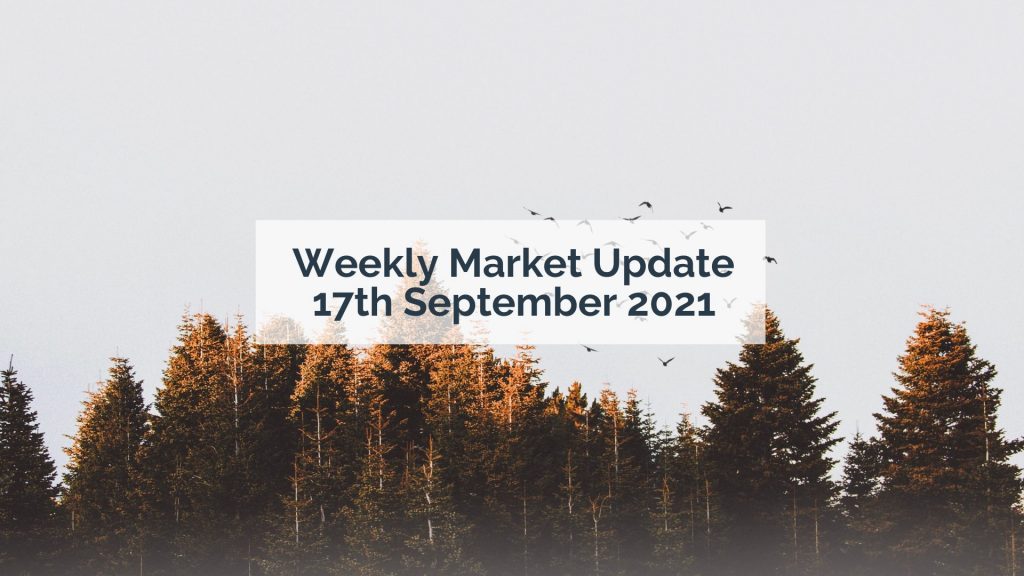
Weekly market update 17 September – Dollar strengthened ahead of highly anticipated interest rate decision from FOMC, Sterling traded sideways after inflation rate hit a 9-year high ahead of Bank of England’s monetary policy decision
Weekly market update 17 September – Dollar strengthened ahead of highly anticipated interest rate decision from FOMC, Sterling traded sideways after inflation rate hit a 9-year high ahead of Bank of England’s monetary policy decision
1. The U.S. dollar rallied to a three-week high after U.S. retail sales unexpectedly rose 0.7%, surpassing market forecasts of a 0.8% decline. Inflation remained high but slowed down more than expected, supporting Federal Reserve Chairman Jerome Powell’s conviction that the inflation winds whipping through the U.S. economy may be transitory. Elsewhere, the Michigan Consumer Sentiment inched higher to 71, although it underperformed compared to forecasts. Meanwhile, the U.S. stock market extended its decline this week, with the S&P 500 dropping 0.7% to a month-low of 4433, and the Dow Jones dropping 0.1% to record its third straight week of losses. For the S&P 500, it was mainly the materials and technology sectors that led losses and dragged the index down. For the week ahead, investors will be keeping a close watch on the FOMC interest rate decision, on 22 September, expecting more direction on the Federal Reserve’s timeline on tapering of asset purchases. Although the FOMC is unlikely to release a concrete plan on tapering, investors will still be wary of any hints from the Federal Reserve in pushing forward their plan to reduce stimulus, which is currently projected to take place around the end of the year.
2. Euro fell back to below $1.18 in mid-September after ECB said it will slow down the pace of the bond buying program from the $80 billion a month since March, with no details about the exact end of the emergency support. On the data front, Industrial output in the Eurozone increased by 1.5 percent from a month earlier in July 2021, recovering from two consecutive months of contraction and beating market estimates of a 0.6% growth. Meanwhile, UK inflation jumped more than expected to 3.2% in August, hitting a 9 year high since March 2012. Pound traded at $1.38 on Friday, it’s lowest level for over a week after retail sales volume dropped by 0.9%, the fourth consecutive month of drop and below market expectations of a 0.5% increase. Investors now turn their focus to the Bank Of England meeting next week Thursday where policymakers could provide a sign as to when the central bank will tighten its policy. At the same time, FTSE 100 erased gains to close 1% lower on Friday, a level not seen since July 20th, led by a selloff in shares of Anglo American as well as the slowing global growth and tighter regulations on Chinese firms.
3. Aussie traded at $0.73 mid September, the lowest since August 31st after Reserve Bank of Australia governor Philip Lowe said in a speech this week that the economy would see a sharp GDP contraction in Q3. On the pandemic front, Prime minister Scott Morrison pledged more freedom for the vaccinated. Elsewhere, Australian seeking unemployment benefits rose last week to 332,000 from a pandemic low. The New Zealand Dollar rose to $0.71, approaching a 3 month peak of $0.717 supported by a strong GDP data, recording a 2.8% growth as compared to market expectations of 1.3%. On the monetary policy front, RBNZ is expected to tighten policy after the easing of lockdown restrictions in the country. Elsewhere, gold dropped for a second week consecutively as recent US data painted a mixed risk sentiment while Crude oil fell to $72 a barrel as more supplies are introduced into the market.



